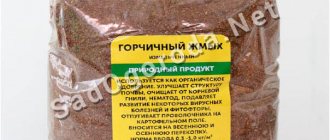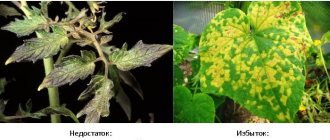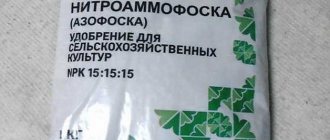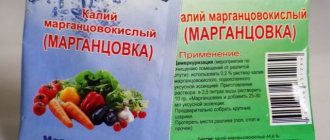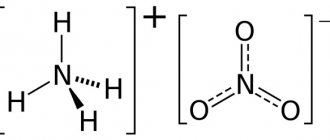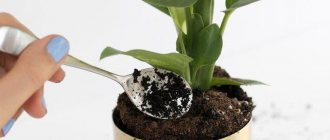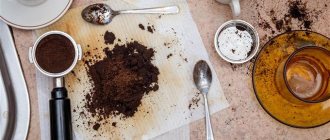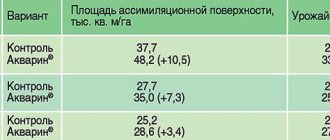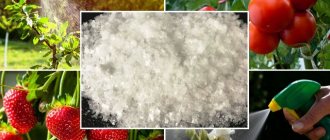Unfortunately, not all lands are black soil, but everyone involved in agriculture strives to obtain the highest possible yields. Fertilizers are used for this purpose. Organic fertilizers are considered effective, but the problem is where to get them, their delivery, and cost.
An alternative is mineral fertilizers. One of the most popular today is the luxury fertika, which appeared on the market only 6 years ago. It refers to complex fertilizers.
Mineral fertilizer has gained well-deserved popularity among summer residents and professional farmers. The range of uses covers fields, parks and garden areas. This drug is manufactured from pure raw materials.
Tips for the garden, vegetable garden and flower garden
Fertilizers for potatoes in the spring to increase the yield
Caring for strawberries in the spring after winter for beginners
Favorable days for planting potatoes in 2021 according to the lunar calendar
The drug is presented on the shelves of garden stores and large supermarkets. The bright packaging design attracts the eyes of customers.
Fertika is a popular fertilizer
The mineral mixture is made from high-quality purified components that do not contain heavy metal salts or chlorine. Suitable for most garden and indoor plants, because manufacturers produce mixtures of highly targeted effects:
o for potatoes;
o floral;
o for autumn use – Autumn Fertika;
o for conifers, acidifying the soil;
o for lawn grass;
o universal – Fertika Lux.
The packages are packaged in such a way that it is convenient for customers to calculate dosages for their garden. You can buy a 20 g package of Kemira fertilizer (Fertika) for one-time use.
Varieties of the drug Fertika
This Fertik fertilizer is the same in composition as plant food produced in Finland, Kemira. But after 2011, all the shares of the plant that produced Finnish fertilizers were bought by the Norwegians, and now instead of Kemira they produce a fertilizer with a similar composition, but under a new name - “GrowHow”.
And Russian enterprises registered a new trademark instead of Kemira - Fertika. And if somewhere in specialized stores after 2011 gardeners came across “Kemira”, then it is definitely a fake, so it is better not to purchase it, but to buy only Fertika - a fertilizer with a similar composition, but not fake.
Photo of Fertika Lux fertilizer
Fertika Lux fertilizer is available in the form of large granules that are easily soluble in water.
This fertilizer does not contain chlorine or heavy metal salts, so it can be used to feed absolutely all cultivated plants in the garden.
Fertilizer originators produce various types of Fertilizers for different garden and vegetable crops:
- for potatoes;
- for garden flowers;
- for application to the soil in the autumn - Autumn Fertika;
- for coniferous trees and shrubs, increasing soil acidity;
- for lawn grasses;
- universal fertilizer – Fertika Lux.
This fertilizer comes on sale in different packaging, the smallest of which is 20 g. It is usually purchased by those summer residents who need to immediately fertilize their plants in the garden or vegetable garden.
Varieties from the Fertiki line can also vary greatly in composition
. Thus, the composition of spring-summer preparations contains more nitrogen and potassium, since during this period it is the mentioned minerals that are needed for the active growth of the vegetative mass and the enhanced formation of ovaries and fruits. And in the autumn, crops no longer need nitrogen, but to prepare for winter they need phosphorus and potassium.
Fertika Lux is the most popular of the line of these fertilizers, as it is suitable for feeding any plants in the garden or vegetable beds, but it is also the most expensive of all
. The drug is packaged in sachets weighing 20-100 g, but the drug is economical - it is enough to dilute just a tablespoon of the product (20 g) in 10 liters of water.
On a note!
To feed seedlings, dissolve 20 g of Fertika Lux in 20 liters of water.
Fertilizer Lux crystal (Fertika) - video
Instructions for using Fertika fertilizer
Fertika is a mineral fertilizer. Initially it was produced in Finland, but now there is a production factory in Russia. Fertilizer is produced according to European standards from Finnish raw materials. This is a completely safe, non-toxic product. It does not contain chlorine or any of its derivatives. It is used in spring, summer and autumn - the main thing is to choose the right product, because there are several types of this fertilizer.
Gardeners in many countries know about Fertik fertilizer; they love it and successfully use it in their gardens. But what are its advantages, how does it attract attention?
Tips for the garden, vegetable garden and flower garden
Cucumber Khrustik f1 description reviews photos planting and care
Fertilizing strawberries in spring with iodine and boric acid
Feeding tomato seedlings at home with yeast
- The fertilizer dissolves very quickly and easily in water without any residue.
- All types of Fertik fertilizers have a high-quality, balanced composition. It was developed by specialists who take into account the characteristics and needs of certain plants.
- There is no chlorine in the composition, and all components are carefully selected. It is believed that if nitrates accumulate when using this fertilizer, then in very small, safe quantities!
- Under the influence of the drug, plants develop faster, ovaries may appear on them earlier, and flowering becomes longer.
Interesting! Fertik fertilizer can improve the color of leaves or flower petals and have a positive effect on the size of the buds.
- Fertilizer not only nourishes, but also protects plants from diseases, increasing their immunity.
- Plant resistance to external factors increases.
- The resulting products have an increased shelf life.
Fertika is produced in the form of small, colored crystals or granules, as well as in the form of a concentrated liquid solution. Both options are highly soluble in water and are in great demand. As for the packaging, there are large ones, for production and large farms, and small ones of 25 g, for indoor flowers or a small garden.
Using Fertik fertilizer is quite simple: to feed vegetables, you need to dilute the granules with water and water the plants with this solution. If it is necessary to feed the soil, then in this case the granules are scattered on the ground, then dug up along with the soil. Before planting seedlings, Fertik fertilizer is mixed with the soil and placed directly under the roots. All these methods are used for water-soluble granules. Fertilizer dissolved in water supplies plants with micro- and macroelements necessary for normal development through the root system.
Types of Fertika fertilizers
At different times of a plant’s life, the need for enhanced nutrition, the composition of fertilizers and the ratio of substances in them differs. So, at the beginning of the development of useful elements, more is required, later their importance decreases.
The proportional ratio of basic substances, such as phosphorus, nitrogen, potassium, in combination with meso- and microelements in different Fertik complexes is optimally calculated for a specific crop and time of application, which allows plants to grow and develop harmoniously.
Expert opinion
Oksana Alexandrovna
A gardener with extensive experience. Vegetable gardening is more than just a hobby for me.
Fertik's fertilizer does not include chlorine.
Among the brand’s products, special complexes have been selected for:
- seedlings;
- lawns and flower beds;
- coniferous plants;
- vegetables, root vegetables;
- berry crops;
- home flowers.
According to the formulation form, Fertika fertilizers are divided into two types: granular and water-soluble.
The line of mixtures made from colored granules has long won its adherents among gardeners and gardeners due to its ease of use and non-volatility. Each granule contains all the elements, and their release occurs gradually, resulting in a prolonged result.
Application of granular fertilizers is possible in several ways:
- The granules are mixed with the seedling substrate. Then the resulting mixture is watered and left for 3-5 days.
- The fertilizer is evenly scattered over the surface of the site, followed by digging up the soil. This method is used for spring soil preparation.
- During planting work, the agricultural product is applied into the holes when planting seedlings or into the rows when sowing seeds. After this, mix with the substrate.
- For feeding, dry granules are distributed around the plant. They are then buried in the soil. Before the procedure, the soil is moistened.
Water-soluble fertilizers in diluted form are intended for watering the root parts of plants, as well as for spraying during foliar feeding. This type of mixture has excellent solubility, there are no impurities in it, and it can be combined with pesticides in tank mixtures.
The packaging of Fertik mineral complexes depends on the type of fertilizer. In private farms and for house plants, small packaging is usually used. Fertilizer in granules or crystals - in bags of 25-100 g. Liquid formulation - in containers of 5 ampoules of 10 ml, 3 ampoules of 30 ml, as well as bottles of 250 and 500 ml.
For all mineral complexes of Fertik, regulations for use and dosage are provided.
Fertika-Lux fertilizer - description and instructions for use
Fertika Lux is available in fine crystalline and liquid form. Both forms require prior dilution in water.
Fertika-Lux fertilizer
Lux mineral complexes are designed to nourish planting material, vegetables, and ornamental crops. They contribute to:
- plant growth;
- formation of ovaries;
- increasing yield;
- bud formation;
- increasing the color period;
- increased saturation of tones of flowers and greenery.
Fine-crystalline fertilizer can be used by watering all year round: February-April - for seedlings, May-July - for vegetables and ornamental crops, from August to January - for house plants.
Fertika Lux crystalline complex is packaged in packages of 20 and 100 g.
Seedlings are fed once a week with a solution of 1 tbsp. spoons of fertilizer per 20 liters of water. For garden ornamental crops and vegetables, the working fluid is prepared in the following proportion: 1 tbsp. spoon of mineral complex in a bucket of water. Plants in greenhouses and greenhouses are watered once a week, flower beds and beds - every 14 days.
For home plantings, dilute 1 tbsp in a bucket of water. a spoonful of fertilizer. In summer, the solution is used every time during irrigation, in winter - every 2-3 times.
Expert opinion
Oksana Alexandrovna
A gardener with extensive experience. Vegetable gardening is more than just a hobby for me.
For plants that are in the dormant stage or immediately after transplantation, fertilizer is not required.
Fertika Lux liquid mineral complex comes in two types: for vegetable crops and seedlings, and for house plants. Both types are packaged in boxes of 5 10 ml ampoules and bottles: for vegetables - 250 ml, for house plants - 500 ml. The complex in ampoules is used: for seedlings - February-April, for vegetables - May-July. The bottles can also be used the rest of the time - for home cultures.
One ampoule is diluted per liter of water, and root and foliar feeding is carried out with the working solution every 10-14 days.
Planting material is fertilized once a week; for this, 1 cap of Fertika Lux, packaged in bottles, is dissolved in 2 liters of water. The same concentration is used for irrigating home greenhouses, only their frequency in the winter season is reduced to 1 time in 20 days. For spraying ornamental and vegetable crops, use the same solution, repeating the procedure every 14 days.
Fertika Kristalon fertilizer - description and instructions for use
A series of water-soluble complexes Fertika Kristalon is also produced in fine-crystalline and liquid form.
Fertilizer Fertika Kristalon
Fine-crystalline fertilizer is intended for pumpkin and nightshade crops, flowering plants, and a universal fertilizer has also been developed. Mineral complexes reduce soil acidity and contribute to:
- improving the taste of vegetables;
- increasing crop yield and its preservation;
- increasing the green mass of plantings;
- accelerated plant growth;
- increasing immunity and resistance to negative natural factors.
Kristalon fertilizers are used by irrigation and spraying methods. From February to April - for feeding seedlings, from May to July - for watering crops, August - for leaf treatments. For ornamental plants, additional foliar feeding is used in July and August.
The Fertika Kristalon fine-crystalline series is packaged in packages of 20, 100 g, as well as in a container of 800 g.
The seedlings are watered with a weakly concentrated aqueous solution (5 g of agricultural product per 5 l) once a week. Foliar spraying is carried out with the same working fluid no more than once every 1-1.5 weeks.
To feed vegetables and ornamental crops, the saturation can be increased to 0.2%, that is, 10 g per 5 liters of water. In greenhouse conditions, fertilizer is used every time when watering; a similar regime is also suitable for house flowers in the summer; in winter, the use of the mineral complex is reduced to every third irrigation. In open spaces, plants are fed no more than once every 2 weeks.
The product line of the Kristalon series includes liquid fertilizer complexes for:
- strawberries;
- citrus, coniferous, palm plant species;
- chrysanthemums, roses, begonias, violets, hydrangeas, orchids;
- garden flowers.
Liquid mineral complexes affect:
- abundant flowering and fruit formation;
- rapid growth and development of green mass and roots;
- accumulation of vitamins and nutrients in fruits;
- richness of tones of leaves and flowers, decorative qualities;
- resistance to infections and negative environmental factors;
- duration of flowering;
- quality of soil for domestic plants.
For home plantings, fertilizer is applied by root irrigation from March to August along with each watering, the rest of the time - every 2-3 times. Strawberries are fed once every 1-1.5 weeks from April to June, garden ornamental crops - once every 1.5-2 weeks from March to August. Spraying of all types of plants is carried out, if necessary, no more than once every 1.5-2 weeks.
Expert opinion
Oksana Alexandrovna
A gardener with extensive experience. Vegetable gardening is more than just a hobby for me.
Foliar feeding is not used for violets.
Liquid fertilizer is packaged in packages of 5 pcs. 10 ml ampoules, as well as 0.5 liter bottles.
For all types of plants, the working solution is prepared from a ratio of 10 ml (1 ampoule) per liter of water. Exceptions are garden flowers, chrysanthemums, roses, begonias, for which the required concentration is: 10 ml per 5 liters of water.
Fertik Kristalon liquid mineral complex, poured into bottles, is diluted for all plants in the proportion of 10 ml (quarter cap) per liter of water. With the exception of orchids, they require a less concentrated solution: 5 ml (one-eighth of a cap) for the same volume of liquid.
Fertika Universal fertilizer - description and instructions for use
The Universal mineral complex was developed by the manufacturer in two versions: “Finnish” and “Universal-2”. Both fertilizers are produced in the form of granules, but in the first the percentage of phosphorus and potassium oxides is higher, and selenium is added. Both fertilizers do not acidify the soil.
Fertilizer Fertika Universal
Packing Fertika Universal Finnish is presented in two types: 1 kg and 2.5 kg, Universal-2 is packaged more variedly - from 1 to 25 kg.
The complexes are used throughout the growing season: in February and March they are added to the seedling substrate, in April and May they are added when preparing the soil and planting planting material. In summer, plants are fed if the year is rainy or the soil is depleted and infertile. In this case, half the dose is applied, no more than 2 times per season.
The table shows the consumption rate of Fertika Universal for different crops.
| Cultures | Consumption rate, g/1 m² |
| Strawberries, young conifers, fruits and berries, ornamental shrubs and trees | 30-50 |
| Mature trees in fruiting stage | 70-90 |
| Greenery | 80-90 |
| Raspberries | 80-120 |
| Gooseberries, currants | 100-120 |
| Vegetables and early ripe cabbage | 110-120 |
| Cabbage, tomatoes | 150-160 |
If a high application dose is required, then fertilizing can be divided into stages, for example: for a crop, 160 g/m² is needed, then during spring preparatory work, 90 g/m² is used, then in the summer season, fertilizer is applied twice at 35 g/m².
Fertika Flower fertilizer - description and instructions for use
Fertika Flower mineral complex is produced in granular form. It contains a high concentration of nitrogen and added calcium. Designed for both annual and perennial ornamental plants, as well as bulbous ones.
Fertika Flower Fertilizer
Fertilizing promotes the formation of large flowers with rich colors and increases the duration of the flowering stage.
In the Fertika retail chain, Flower is presented in containers of 1000 and 2500 g.
The timing of application is similar to the Universal complexes, that is, first the fertilizer is used for seedlings at 30-40 g per 1 m², then for preparatory soil work in the spring, the granules are evenly scattered over the surface, dug up, in the summer - the flowers are fed with a half dose no more than twice a season.
For ornamental crops, the innovative Leaf power series should also be mentioned. The complexes contain a high content of basic elements and are sold ready-made. The package contains 3 ampoules of 30 ml. The products in this line can be used all year round.
Fertika Lawn fertilizer - description and instructions for use
Lawn fertilizers under the Fertika brand are available in two types, differing in the time of application. The preparative form of both complexes is granules. Since the consumption rate of these agricultural products is quite high, the packaging is voluminous - from 5 to 25 kg.
Fertika Lawn Fertilizer
Spring-summer lawn fertilizing is designed to ensure a rich green color of the grass, its density, and faster growth after mowing.
The first time in the season, fertilizer is applied when the snow melts. After the lawn is cleaned and put in order, the granules are scattered over the surface at the rate of 400-500 g per 10 m². In this case, the ground must first be moistened.
Subsequent fertilizing is carried out after mowing the lawn, but not more than once every 2 weeks. The dose of agricultural product is increased to 500-700 g/m², evenly distributed throughout the area. After the procedure, the lawn is watered abundantly.
Fertika Lawn, used in the fall, contains a higher amount of potassium and phosphorus. It allows the seeds to gain a better foothold, promotes the formation of a strong root system, and makes the grass more resistant to winter conditions.
When laying out a lawn in August-September, dry fertilizer is sprinkled into loosened soil at a rate of 600-1000 g/m². Then the area is leveled, compacted and watered. For autumn feeding, the dose of agricultural product is 200-300 g/m².
Advantages and disadvantages of Fertik fertilizers
Among the positive characteristics of the mineral supplement are:
- A competent combination of the main components of an agrochemical.
- Lack of toxic substances, in particular chlorine and heavy metals.
- The versatility of the drug, which is reflected in the possibility of its use in closed and open ground, as well as when growing home flowers.
- Good solubility in water due to its fine crystalline form.
- Increase in the number of ovaries and buds.
- Flowering induction becomes better.
- Increased immune strength in treated crops.
- High performance properties.
- Increasing the level of endurance regarding negative environmental factors.
- Improving the commercial qualities of fruits and inflorescences.
- Saturation of color in flowers and leaves.
- Creating the most comfortable conditions for the normal growth and development of planted crops.
- High degree of absorption.
- The results appear in a short time.
- Increasing the shelf life of crops.
- Ease of use of the drug.
- Variety of options (Spring-Summer Universal, Flower fertilizer, Potato Kemira, etc.).
No deficiencies were found in the mineral supplement if all the requirements specified in the instructions were met when using it.
Composition, release form and scope of application
Fertika Lux contains a set of substances that stimulate plant growth. Macroelements, the main one of which is phosphorus, are beneficial for most garden plants. Fertilizer is also used to support indoor flowers.
The mineral complex is produced in the form of small crystalline granules that dissolve well in water. “Fertika Lux” goes on sale in small 20-gram bags and large packs of 100 grams.
Scope of use of fertilizer:
- For feeding fruits grown in greenhouses.
- In order to increase the flowering period of domestic plants.
- As a stimulator of seedling development.
- As a means of accelerating the rooting of vegetable crops after planting in the ground.
- For processing flowers during the period of bud emergence. The drug affects the color intensity.
Positive results appear even with minimal use of Fertika Lux.
Fertika fertilizer application rates
For indoor flowers, you need to dissolve one tablespoon of the drug in a 10 liter bucket of water. In the warm season, the solution can be applied with every watering. In winter, fertilizer can be applied subject to an interval of 2-3 waterings.
It is not advisable to feed decorative flowers when they are dormant. This should not be done if the plant has recently been replanted.
You can fertilize seedlings by dissolving 1 tbsp. spoon in 20 liters of clean water. Watering the seedlings should be done once every seven days. You need to use the complex for vegetables, calculating 1 tablespoon per ten liters of water in closed ground. Watering them is carried out similarly to the previous one.
Tips for the garden, vegetable garden and flower garden
Crocuses planting and care in open ground photo
Cucumber Emerald Placer f1 description reviews photos planting and care
Cucumber Claudine f1 description reviews photos planting and care
Fertilizer is applied to open ground at the rate of 1 tbsp. spoon for 10 liters of water. Fertilizing is required once every 14 days.
Neutral reviews
Since I’m writing about flowers today, it’s worth writing about fertilizers. I like to use different ones. I use the advice of sales consultants in stores to a lesser extent (I understand that people are interested in sales and will praise anything). I trust the reviews of amateur gardeners like myself more.
So, over the last year I have heard a lot of good things about the Fertika Lux complex fertilizer produced in Finland. I bought 1 sachet a month ago to try.
The bag is small, 20 grams, polyethylene, tightly sealed.
It looks like this and fits easily in the palm of your hand:
On the reverse side the composition is given, safety precautions are indicated and brief instructions for use are given, all in Russian.
The fertilizer is slightly toxic - hazard class - third according to GOST 12.1.007. Therefore, it can be used for indoor flowers without fear.
If you cut the bag, you will see bright pink crystals, the size of medium or coarse table salt.
The crystals dissolve easily in water.
As you can see in the very first photo, the fertilizer costs 39 rubles. It should be dissolved in 10 liters of water - all 20 g at a time. A bucket of water is just enough for me to water all my indoor plants, with the exception of ficus plants (I water them rarely and a lot). It turns out to be quite expensive. If you consider that in the summer I have about 20 large flowerpots in my garden, for which I spend 3-4 buckets of water, then at this cost you can go down the drain!
But! FERTILIZER IS DEFINITELY VERY EFFECTIVE!
Flowers begin to transform already 3-4 days after watering: the foliage becomes more saturated in color, the stems become thicker, the flowers become brighter and more abundant. I have one harmful violet, which has bloomed only once in 3 years of its life. So after watering with Fertika, 10 days later I picked up large buds, I’m waiting for them to bloom.
They also say that fertilizer allows you to grow very strong and healthy vegetable seedlings. It’s too early to sow the seeds of peppers and eggplants, especially tomatoes (unless, of course, for greenhouses), but I will definitely use Fertika for growing vegetable seedlings.
I liked the fertilizer, except for the high consumption and, accordingly, the price. I can recommend it.
I'm not much of a florist, but I try to take care of my few violets, ficus and cacti.
Just like people, flowers need support after a long winter. We drink vitamins, and rush to choose a cream that is more nutritious, more fortified, and warm up in the bathhouse with aromatic oil. But flowers can’t afford anything)
It’s the end of winter outside (at the beginning of writing this review), and my ficus looks as if it’s the beginning of autumn outside. “It is not out of goodness that a tree sheds a leaf” - a Russian proverb comes to mind! Yes, what a “good thing” if for almost half a year there is no light for a long time and dry air from heating! It's time to lend a helping hand to the suffering ficus! until he stretched out his “legs”!
I ask the moderators not to remove this and subsequent photos of flowers, as they confirm the use of the object of the review.
A shower was arranged for him with slightly warm water, after which the ficus began to look even more lonely. It's time for vitaminization! )
The nearest seed store recommended water-soluble fertilizer for seedlings, flowers, and vegetables. Universal in a 20 g bag worth 35 rubles!
Nitrogen, phosphorus, potassium - these are the three main pillars on which the miraculous (this remains to be tested) power of this vitamin for plants rests! )
From the finely written annotation on the bag itself, I understood that you need to water your indoor flowers with water and fertilizer powder soluble in it. I calculated that you need to add half a teaspoon to 1 liter of water. I took a full coffee pot.
Also no visible changes. You can say “thank you” to the ficus that at least it has stopped shedding leaves)
I will continue to water the flowers using these pink powdery granules.
Perhaps flowers are like people - one remedy helps some, but not others! )
Perhaps knowledgeable flower growers know special care secrets! )
I decided it was better not to guess and called the specified phone number, which is listed on the back of the package. It turned out to be a small investigation and it turned out that it was not in vain that I did it, my doubt did not let me down. I explained the situation and asked for help to determine whether the kupissa was a fake. I sent them via WhatsApp a photo of the packaging on both sides and the powder itself, they looked carefully and... alas, it turned out that I bought a fake after all. The structure and color of the powder really do not match the original, + there are some differences on the packages themselves. They also taught me what to pay attention to in the future when purchasing this fertilizer, for example, for new batches that are being produced this year, the packaging itself has some features from the previous ones. I’m glad I figured it out, now I’ll be more vigilant and attentive when buying this favorite fertilizer.
Article on the topic: Fertilizer for conifers FASCO - reviews, description
Fertika Lux – application
Reviews about the universal mixture are most positive. Because the mixture is used sparingly and the plants immediately feel the supply of nutrients in the form and quantity necessary for full absorption and development.
Composition of Fertika Lux:
o 20% phosphorus;
o 20% potassium;
o 10% nitrogen.
Nitrogen is responsible for active photosynthesis and the accumulation of greenery, the growth of new shoots. Phosphorus allows the root system to develop and absorb other nutrients. Potassium is responsible for flowering, ovary formation and fruiting. All types of fertilizing contain the most potassium, since this is the main element on the amount of which the flowering of ornamental or fruit plants depends.
They are crystals that quickly dissolve in water. The microelement selenium makes fruits sweeter. At the same time, the nutritional value increases, since this microelement is considered rare and cannot be found in many fruits or vegetables.
Deadlines for depositing
- From February to April - fertilizing of grown seedlings is carried out.
- In the period from May to July - as a plant feed for any growing method (indoor, open ground).
- Year-round - when planting seeds, planting seedlings, feeding balcony and indoor plants.
The substance is classified as hazard class 3 (moderate toxicity). Do not use food containers to prepare the solution; wash your hands after using the additive.
Products of the Kemira brand, Kemira GrowHow, have not been produced since 2011, so be careful that fertilizers with this logo are fakes.
Fertilizer storage conditions
The drugs are hermetically packaged and can be stored for more than 5 years. From the open package, the remaining fertilizer is poured into a glass container with a tight lid. The prepared solution should be used on the day of preparation.
Long-term cultivation of vegetable, fruit and ornamental crops in the same place leads to soil impoverishment. Plants that lack nutrients have poor immunity and are more susceptible to various diseases. With the use of the Fertika agricultural product, this can be avoided thanks to easily digestible components that have the same composition as the Kemira fertilizer. After feeding, the plants will become noticeably stronger, the yield will increase, and the garden will delight with bright, abundant flowering.

